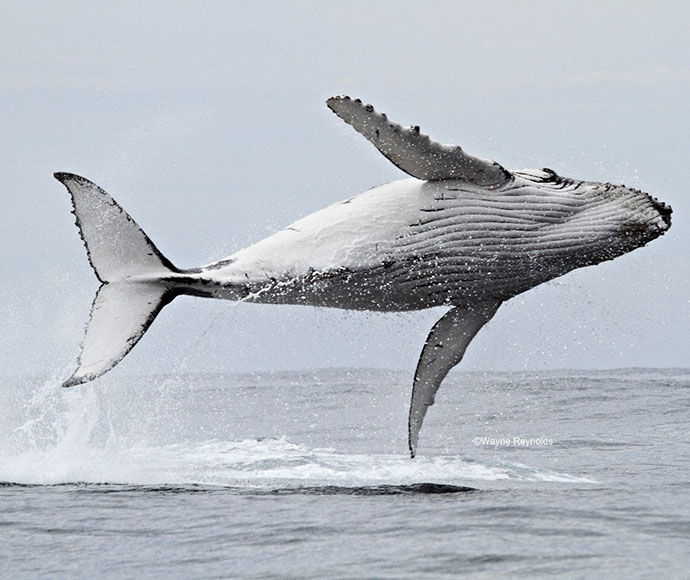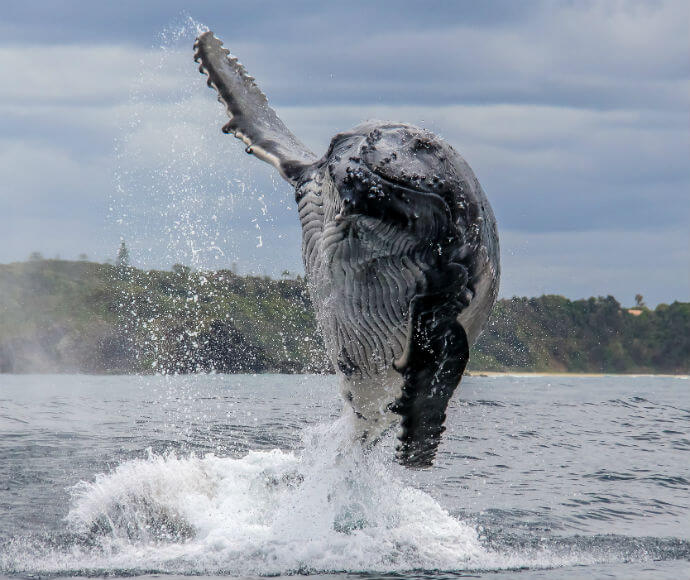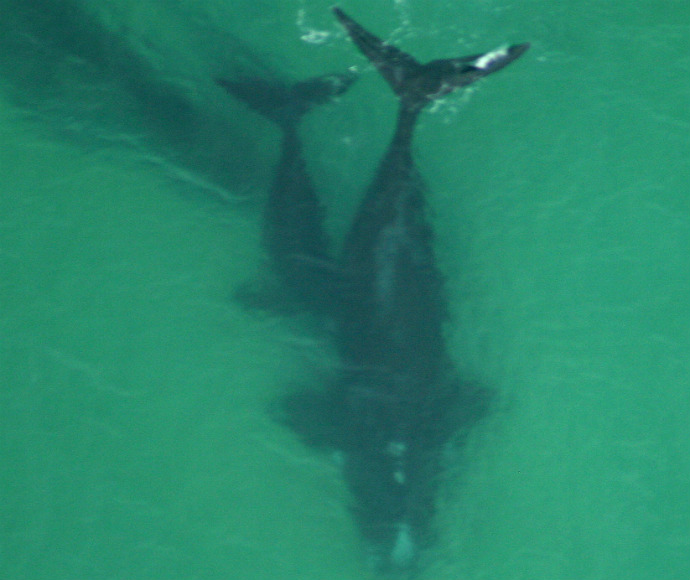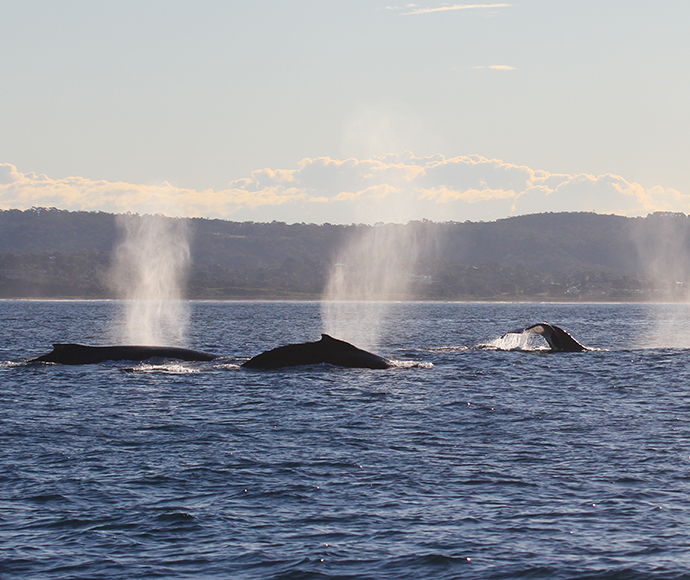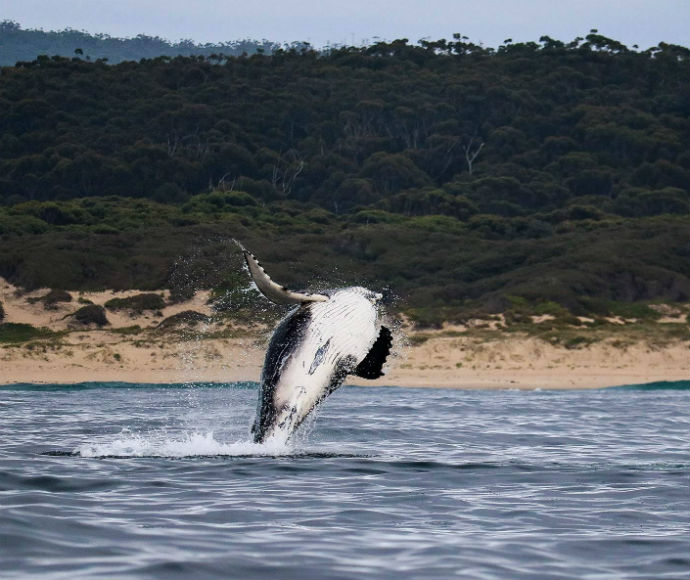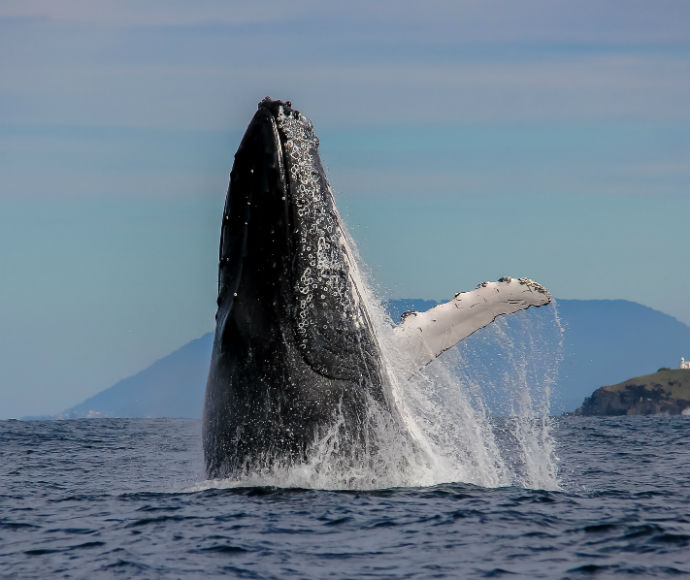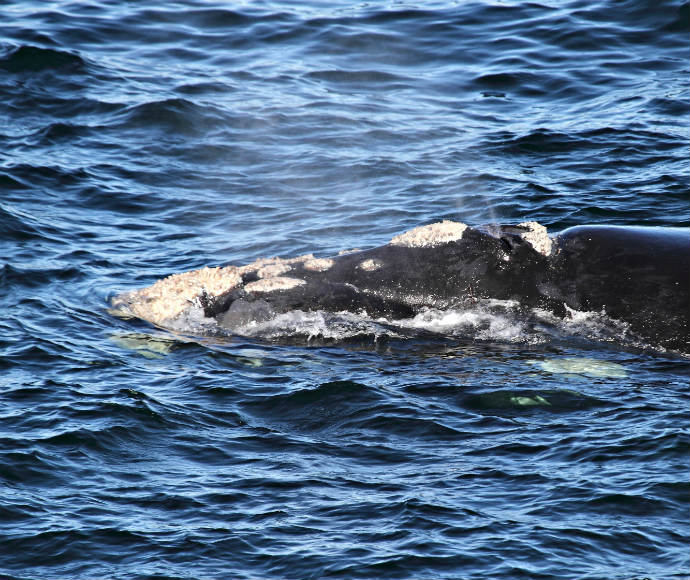They head north throughout June and in the first week of July, travelling up to their breeding grounds in warmer waters. Then, from around September to November, they return southwards.
Around 2000 whales make this journey within sight of the coast each year. At the peak of the migration, you can stand on a coastal headland and see up to 4 whales pass by every hour.
Learn more about the whales that you will see making this journey.
Humpback whale
With their fluke-up dives, fin-slapping rolls and spectacular breaches, humpback whales can put on an awesome show. They are fairly common along the NSW coast but were almost hunted to extinction.
Southern right whale
You can spot a southern right whale by its V-shaped plume of spray. These whales are often seen in shallow water, including estuaries and bays.
Whale watching in New South Wales
Some of the best whale watching spots can be found in our national parks all along the NSW coast, stretching from Byron Bay in the north to Eden in the south.
As well as whale watching, there are plenty of other activities to experience in our coastal national parks, from bushwalking and photography to Discovery tours and spotting a wealth of other marine and land-based wildlife.
Start to plan your coastal adventure at NSW National Parks and Wildlife Service. It's the best way for you to learn about whales migrating along our coastline and to find the best spots in our national parks to see whales and enjoy other great coastal adventures.
Protection of native animals
All native birds, reptiles, amphibians and mammals, but not including dingoes, are protected in New South Wales by the Biodiversity Conservation Act 2016.
